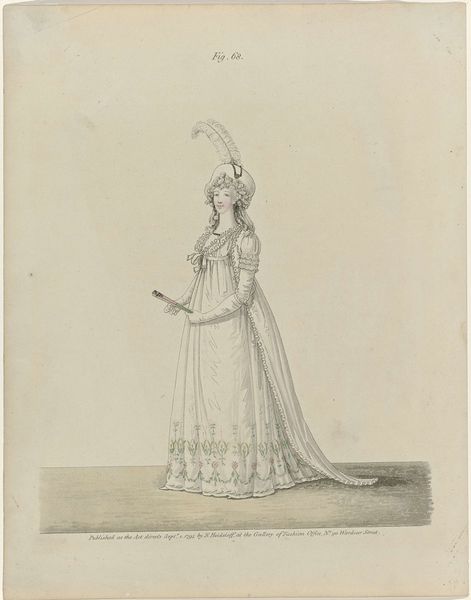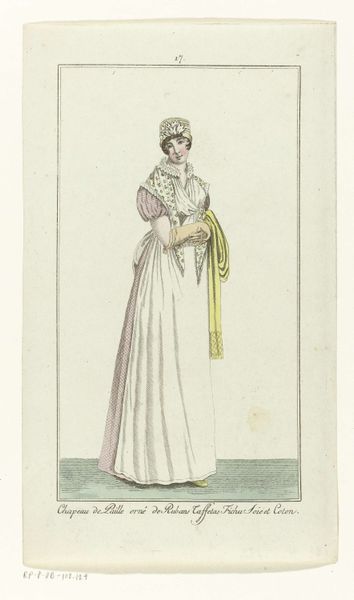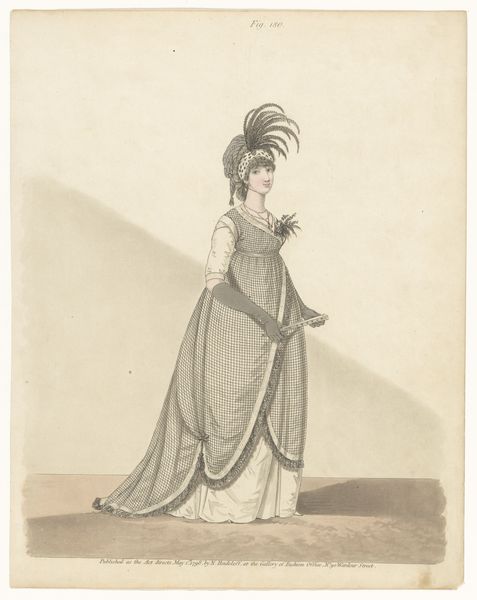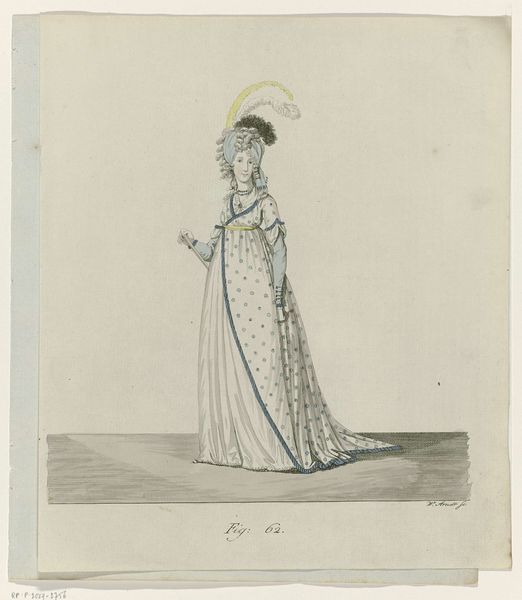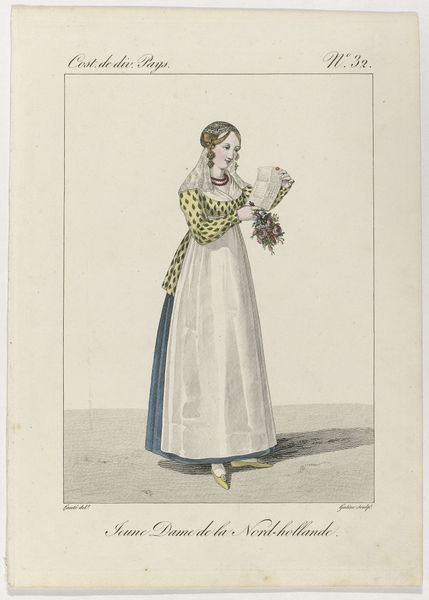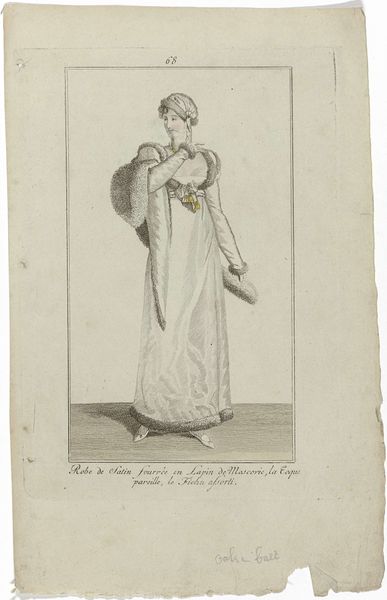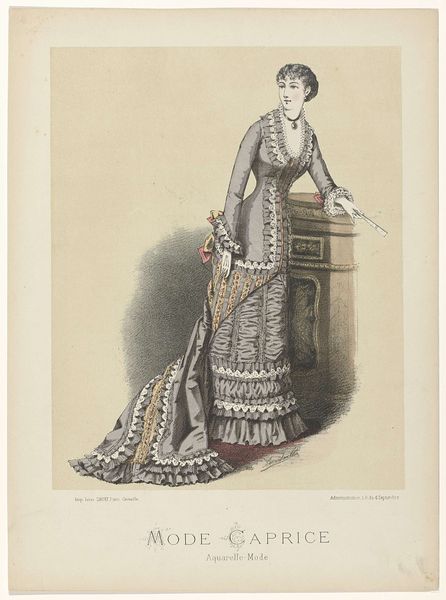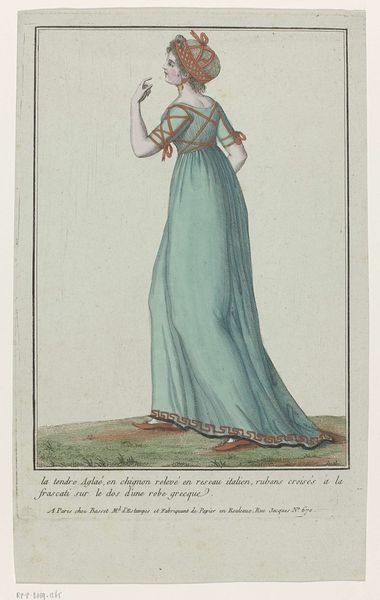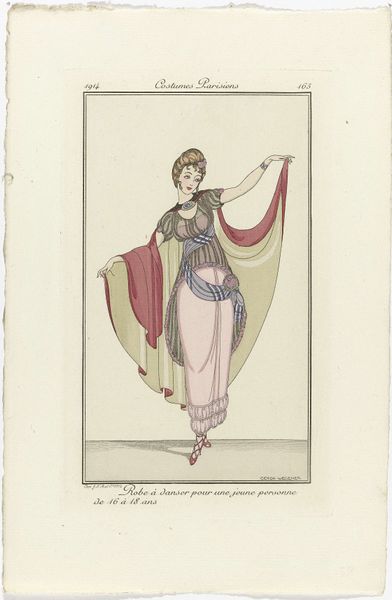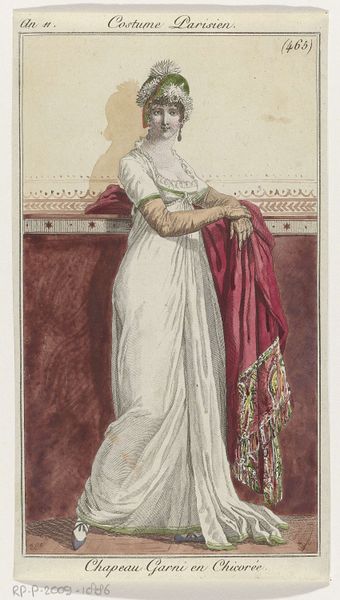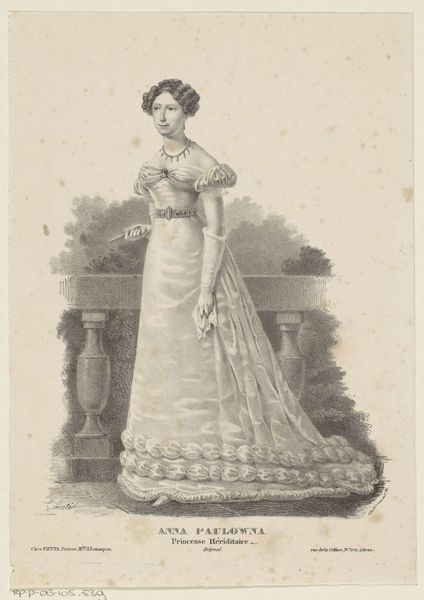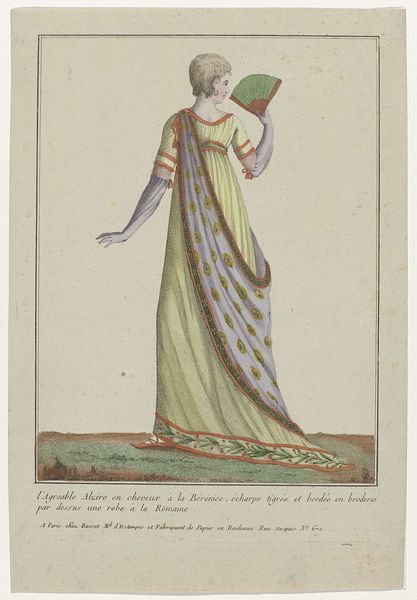
drawing, watercolor
#
portrait
#
drawing
#
figuration
#
watercolor
#
historical fashion
#
romanticism
#
watercolour illustration
#
history-painting
#
academic-art
Dimensions: height 270 mm, width 220 mm
Copyright: Rijks Museum: Open Domain
Curator: This work presents a compelling full-length portrait of Marie-Thérèse Davoux, embodied as Armide. It's attributed to J.L. (II) Benoist, crafted sometime between 1815 and 1845, utilizing watercolor. What's your first reaction? Editor: There's a softness to it, despite the regality of the subject and her costume. The washes of color lend a delicate, almost dreamlike quality to the depiction. It reminds me of fashion plates meant to promote a particular theatre or event, but there's an individuality as well, that moves beyond typical illustration. Curator: Exactly, what you observe underscores how popular imagery plays a role. Prints and drawings like this gained prominence and circulated widely in the 19th century. Reproducing theatrical moments in drawing and print, expanded access to a privileged world and played an important role in how popular historical narratives took hold in Europe. It provided, both literally and figuratively, a stage for political messaging. Editor: I agree. And consider the material craft—the artist's selection of watercolour allows for transparency and layering. We see this delicate rendering throughout the intricate detailing in her elaborate garments and soft complexion, elevating what may have been merely illustrative, a form often categorized as applied art. The very making embodies the consumption and performance culture of the time. Curator: Absolutely. It reveals the societal demand for such imagery. Also, the act of representing Madame Davoux as Armide positions her within a specific cultural and political context. Armide, the sorceress from Tasso’s epic poem "Jerusalem Delivered," symbolized powerful female agency but also the dangers associated with unchecked female power, themes that were certainly circulating in European society following the revolution. Editor: Right. I was just thinking about that and I wonder what those kinds of choices say about who got memorialized through reproductive printing, what materials circulated it, and who ultimately had access to these images. It really becomes an interesting network to pick apart. Curator: Indeed. By considering these layers of history, production and reception, we can more fully appreciate its enduring intrigue as a visual artifact. Editor: And by examining the use of watercolors and other material concerns, we’re pushed to see the rich potential for analyzing even seemingly conventional forms of cultural production.
Comments
No comments
Be the first to comment and join the conversation on the ultimate creative platform.
